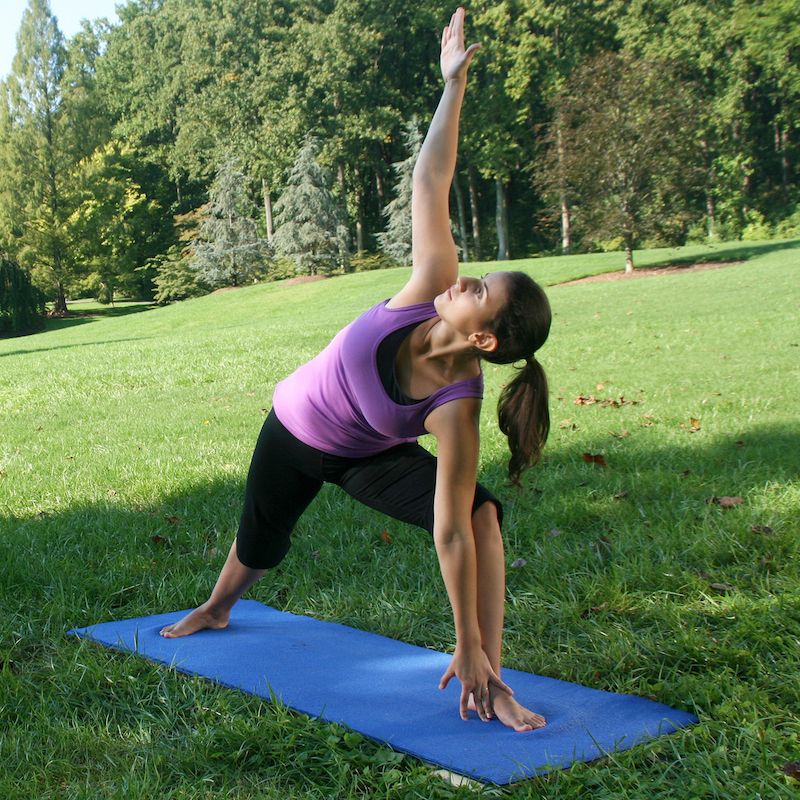Yoga is a centuries-old discipline that can be traced to having begun in India. Movement, meditation, and breathing practices enhance mental and physical well-being. Are there benefits to doing Yoga? Let's find out.

Yoga is a mind-body exercise that improves your flexibility and strength. It may also aid with pain management and stress reduction. Yoga methods vary in how they mix physical postures, breathing techniques, and meditation.
Yoga is a centuries-old discipline that can be traced to having begun in India. Movement, meditation, and breathing practices enhance mental and physical well-being.

Yoga is a broad discipline that originated in ancient India. Its multiple mental and physical health benefits have achieved international appeal. Yoga's central premise is integrating the mind, body, and spirit.
6 Branches of Yoga
Yoga is divided into six branches. Each branch has a particular focus and set of features. The six branches are:
1. Karma yoga
Karma yoga is the spiritual discipline of "selfless action performed for the benefit of others," according to Lord Krishna in the Bhagavad Gita. Through labour, one can achieve moksha (spiritual emancipation) through karma yoga. This can be done through the following steps:

- Start by being your true self. This is the first step to live a life of karma yoga is becoming self-aware.
- Practise kindness, optimism, and thankfulness.
- Greetings, a grin, and affection.
- Maintain the environment around you.
- Contribute.
This service path seeks to create a future devoid of negativity and selfishness.
Read Also: The Benefits Of Mindfulness Meditation In Your Daily Life
2. Hatha yoga
Hatha, which means "force" in the literal sense, is more commonly referred to as "the yoga of force" or "the method for achieving a state of yoga." Thus, asana, or yoga postures (practised in any type of "yoga,") can be included in the definition of Hatha yoga.

Hatha yoga is the physical and mental part of yoga that strives to prepare both the body and the mind. A subset of yoga known as hatha uses physical practises in an effort to channel and preserve the vital force.
3. Raja yoga
This branch entails meditation and strict obedience to the eight limbs of yoga, a sequence of disciplinary measures. While Raja yoga has historically placed a strong emphasis on meditation as a means of achieving self-realization, the name now encompasses a far wider range of practises.

Swami Vivekananda compared Raja yoga to Patanjali's Yoga Sutras in his 19th-century book Raja Yoga. Raja yoga is now frequently used to refer to Ashtanga yoga, also known as the "eightfold path" to spiritual liberation.
Raja yoga holds that a busy mind, which includes excessive thinking, ego, craving, attachment, and a separate sense of self, is the strongest hindrance to realising oneself.
4. Bhakti yoga
Bhakti Yoga seeks to establish a holy path, a constructive manner of channeling emotions and cultivating acceptance and tolerance.

Bhakti Yoga can be practised in a variety of ways, such as by reading or listening to scripture, participating in kirtan—a Sanskrit word meaning "praising"—or ecstatic group singing, concentrating on the Source or universal awareness (however you define those notions), serving others, and making friends.
5. Jnana yoga

This branch of yoga focuses on wisdom, the path of the scholar, and intellectual development via study. Jnana yoga, along with Bhakti (devotion), Karma (activity), and Raja (meditation), is one of the four fundamental schools of yoga, each presenting a road to moksha (spiritual emancipation) and self-realization.
Jnana, the Sanskrit word for "knowledge" or "wisdom," is the intellectual path of studying the texts and oneself.
6. Tantra yoga

This is the route of ritual, ceremony, or relationship culmination.
Also Read: The Top 10 Must-Have Wardrobe Staples For Every Woman
10 Importance of Yoga to Mental and Physical Health
What, then, are the benefits of practicing yoga? Should it be practiced regularly or not? What benefit does practicing yoga have for humans?
Some of the main advantages of yoga are listed below:
1. Stress reduction
Yoga incorporates breathing exercises, meditation, and physical movements that promote relaxation. Additionally, it stimulates the parasympathetic nervous system, which aids in lowering cortisol and other stress-related hormones.
2. Improved flexibility and strength
Yoga postures, known as asanas, involve stretching and strengthening different muscle groups. Regular yoga enhances flexibility, balance, and core strength, improving overall physical performance and reducing the risk of injuries.
3. Increased mindfulness
Yoga encourages present-moment awareness and mindfulness. By focusing on the body and breathing during practice, individuals develop greater mindfulness that can extend to their daily lives. This increased awareness can help manage emotions, improve concentration, and enhance overall mental well-being.
4. Better sleep quality
Many people experience improved sleep quality after practicing yoga regularly. In addition, the relaxation techniques and mindfulness cultivated through yoga can help calm the mind and reduce insomnia or other sleep-related issues.
5. Enhanced mental well-being
Yoga benefits mental health conditions like depression, anxiety, and post-traumatic stress disorder (PTSD). Regular practice can aid in mood regulation, anxiety and depressive symptoms reduction, and the promotion of general well-being.
6. Increased energy levels
Yoga incorporates physical movement, deep breathing, and relaxation, which can boost energy levels and alleviate feelings of fatigue or lethargy. Yoga practices like Sun Salutations (Surya Namaskar) are particularly effective in invigorating the body and mind.
7. Improved cardiovascular health
Some forms of yoga, such as Power Yoga or Vinyasa Flow, can provide a cardiovascular workout that improves heart health. These dynamic styles of yoga involve continuous movement and can increase heart rate, endurance, and lung capacity.
8. Better posture and spinal health
Yoga emphasizes proper alignment and awareness of the body. Regular practice can improve posture, alleviate back pain, and promote a healthy spine by strengthening the core muscles and increasing spinal flexibility.
9. Enhanced immune function
Studies have shown that practicing yoga can boost the immune system. Combining physical movement, breathing exercises, and stress reduction helps reduce inflammation and boost a healthy immune response.
10. Social connection and community
Yoga classes and studios provide an opportunity for social interaction and a sense of belonging. Engaging in yoga can foster connections, support, and a sense of community, contributing to overall well-being.
In conclusion, It's important to note that individual experiences may vary, and it's advisable to consult a healthcare professional before starting any new exercise regimen, including yoga, especially if you have any underlying health conditions or injuries.

